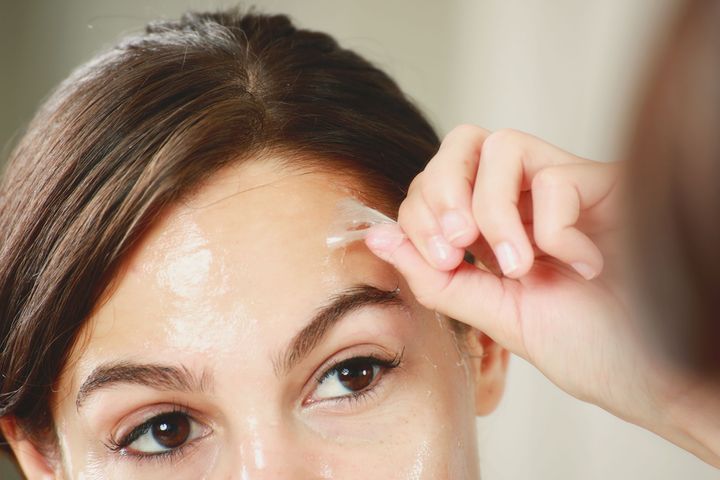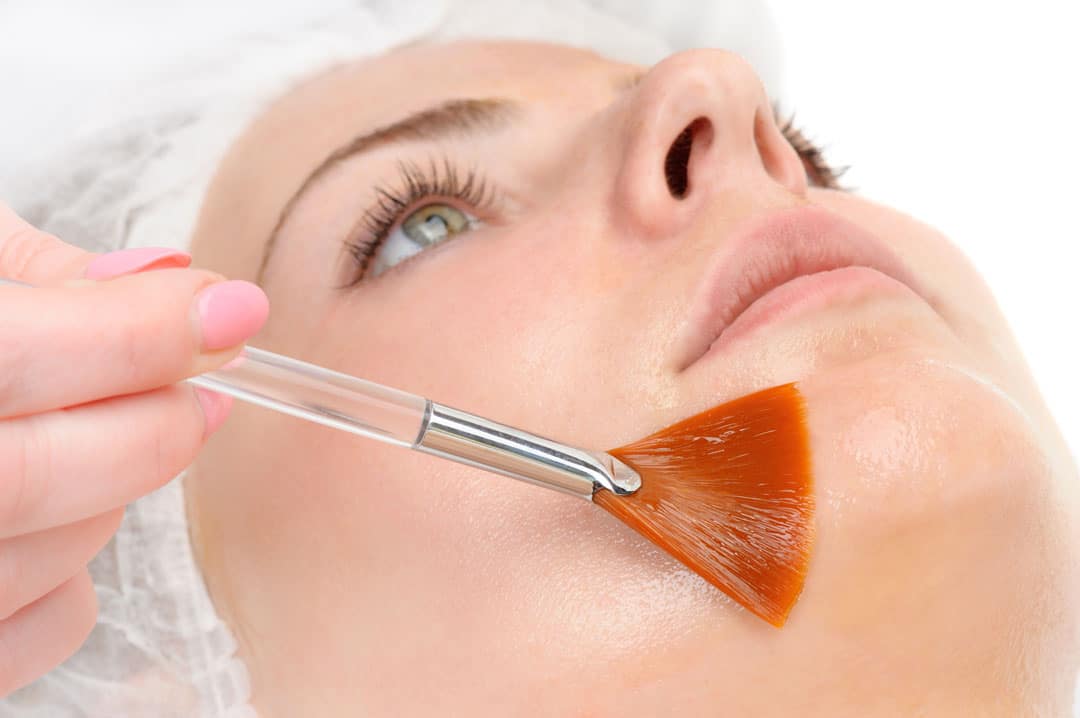Chemical peeling is a technique in which milder form of acids derived from natural sources like glycolic acid, mandelic acid, salicylic acid etc. are used and skin is exfoliated and rejuvenated. Person with pimples, scars, blackspots, aging, dull skin and wrinkles will get benefits from this procedure.
Chemical peel is a procedure that can improve your skin texture, skin tone and lessens fine wrinkles. In this technique, a chemical solution is applied to the skin, which makes it "exfoliate", eventually the skin will peel off and form new skin. The newly formed skin will be less wrinkled and usually smoother than the older skin.
Chemical peels can be done on the neck, face, arms, legs or hands.
This skin rejuvenating technique can be used to:
● Reduce wrinkles or fine lines under the eyes and lower part or around the mouth
● Treat scars caused by acne
● Treat sun-damaged and aging skin wrinkles
● Improve the skin to of mild scars
● Reduce freckles, age spots, and dark patches on the skin caused during pregnancy or while taking birth control pills
● Reduce the drying out of active acne
● Exfoliate the razor bumps
● Reduce the ingrown hair
● Improve the texture and feel of skin

There are three different types of chemical peels procedures are available :
Superficial or lunchtime chemical peel: In this peel, the outer layer of the skin is gently exfoliated using mild acid such as Alpha-hydroxy acid. The Superficial chemical peel treatment is used to improve the look of mild skin discoloration and skin dryness as well as to refresh the face, chest, neck or hands. You might have a superficial peel procedure every two to five weeks.
Medium peel: This type of peel removes the damage present in the middle layer of the skin cells. Glycolic acid peel or trichloroacetic acid peel is used in this treatment and it improves age spots, wrinkles, fine lines and freckles and moderate skin tans. It also can be used to treat some precancerous skin growths, such as actinic keratosis. You might need to repeat this technique to maintain the desired result.
Deep peel: Trichloroacetic acid or phenol is applied in this treatment which deeply penetrates the middle layer of skin to get rid of damaged skin cells. It removes age spots, moderate lines, lentigines and shallow scars. You will notice a dramatic improvement in your skin look and skin tone after this peel and it can be performed once.
Popular chemicals used in peeling solutions are alpha-hydroxy acids -lactic acid and glycolic acid, retinoids (tretinoin dissolved in propylene glycol), beta-hydroxy acids -salicylic acid peel, trichloroacetic acid, and phenol - carbolic acid. Newer agents like mandelic acid, ferulic acid are all increasingly used nowadays.
Salicylic acid is good for oily and acne-prone skin which helps to remove dirt from pores. They act on all stages of acne & it’s an ideal starting agent in acne skin along with azelaic acid.

Generally, You'll notice the results of a superficial chemical peel treatment when your skin heals, and it takes about two to three weeks. For medium or deep chemical peels, It will take longer to notice the results. Though you can see results after a single session, desirable results are seen usually after 3 to 4 sessions. The total number of sessions needed depends upon the degree of pigmentation/wrinkles/scarring.
The results of chemical peels can last from a few months to the rest of your life depending upon the indication. Also, the result depends on the strength of the chemical peel. A superficial chemical peel’s results usually last between one and two months while a medium depth peel produces collagen remodelling which will last for years
Again, the answer is simple! Each peel is unique, similar to our skin composition. Salicylic acid-based peels are suited for acne; glycolic acid peels for skin rejuvenation & collagen remodelling; Tca peel used for scar correction & so on.
After a chemical peel procedure, your skin will be temporarily more sensitive to the sun, so it is essential to apply sunscreen every day. Apply the sunscreen lotion which has "broad-spectrum" on its label, meaning it protects your skin against the sun's UVA and UVB rays. Limit your time in the sun, and importantly, you can apply makeup from the next day itself.

Usually, a chemical peel is a very safe skincare procedure when performed by qualified and experienced experts or doctors.
You should understand that all chemical peel procedures carry some risks and should be always done under
supervision of a dermatologist Normally after a peel, you may experience sun sensitivity, redness & skin exfoliation.
But if your skin is too sensitive, it may blister & peel vigorously.
Your skin may turn black if you don't follow the sun protection properly.
You should understand that all chemical peel procedures carry some risks & it should never be done unsupervised.
